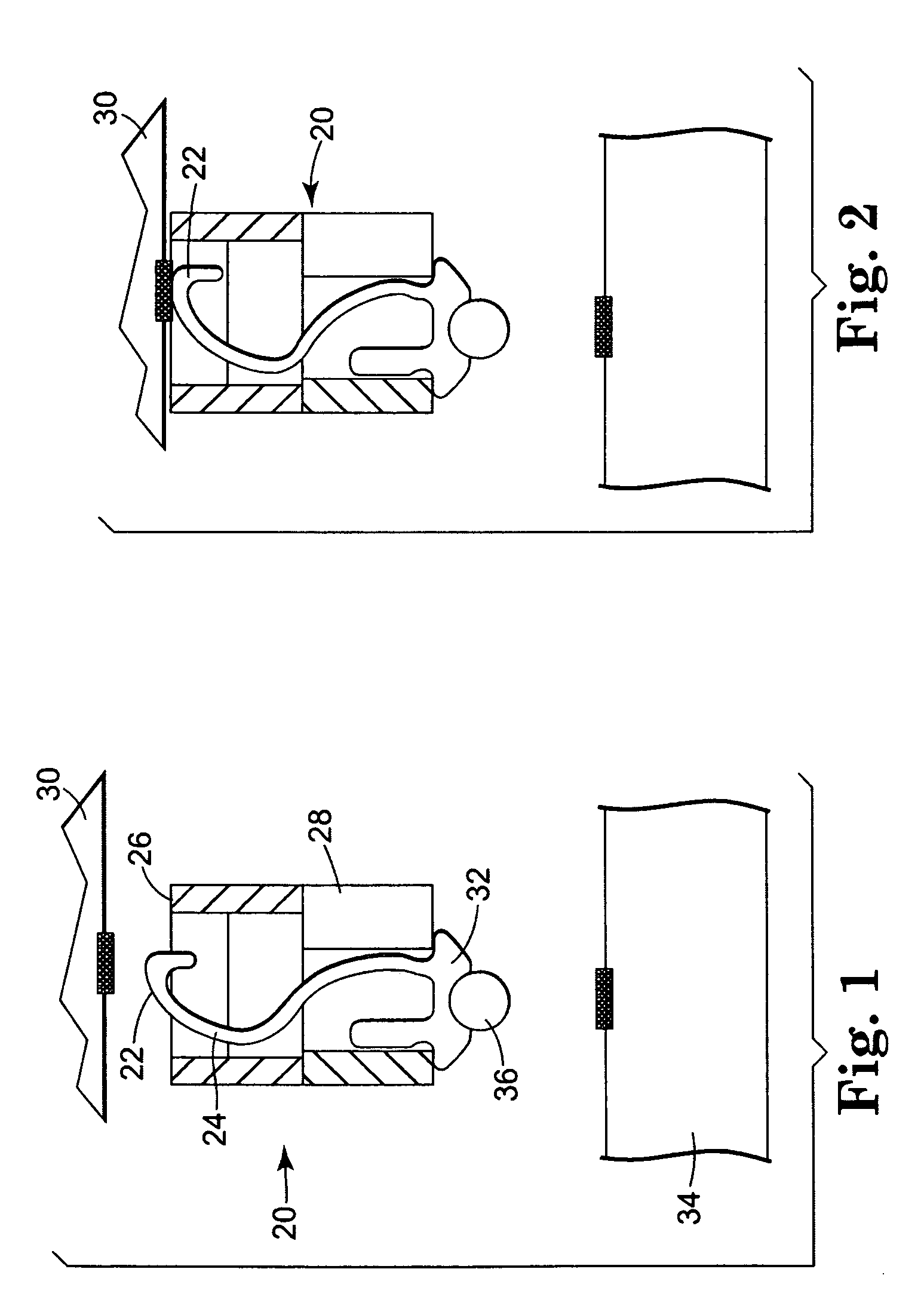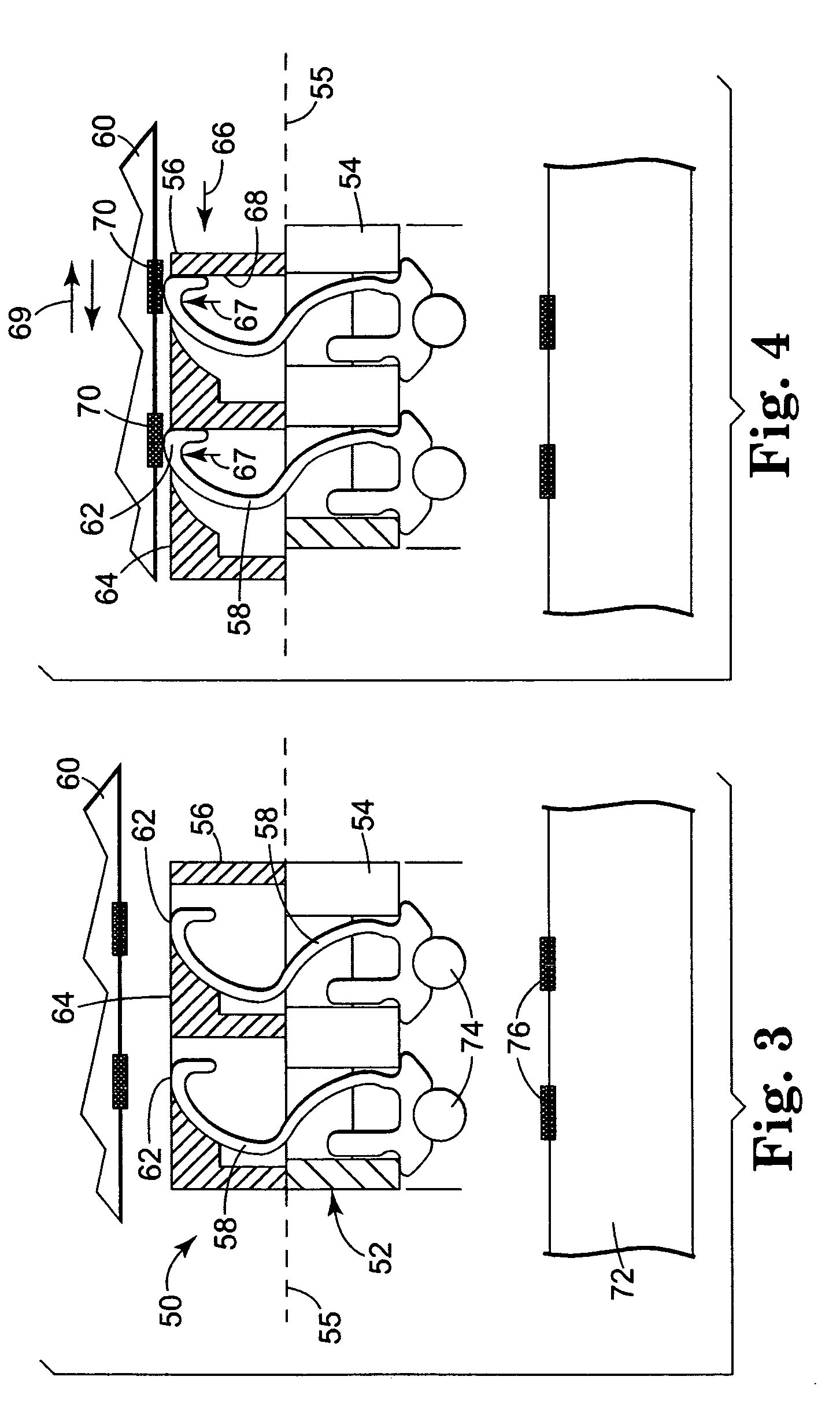Normally closed zero insertion force connector
a technology of zero insertion force and connector, which is applied in the direction of coupling contact members, coupling device connections, electrical apparatus construction details, etc., can solve the problems of stressing components, soldering these connectors to printed circuit boards, and increased scrutiny of tin lead alloy solder and associated chemicals, so as to reduce stress
- Summary
- Abstract
- Description
- Claims
- Application Information
AI Technical Summary
Benefits of technology
Problems solved by technology
Method used
Image
Examples
Embodiment Construction
[0035]The present invention relates to an alternate mechanism and method for actuating an LGA socket such that the contact tips are not exposed to damage prior to insertion of the LGA device. The actuating device can also control the force applied by the contact members on the LGA device.
[0036]As illustrated in FIGS. 3 and 4, the connector 50 includes a housing 52 with a first portion 54 and a second portion 56. In the illustrated embodiment, the first portion 54 is stationary and retains contact members 58. The contact members 58 are preferably stamped or formed. The contact members 58 can be retained in the first portion 54 of the housing 52 by press fitting, insert molding, encapsulating, stitching, and a variety of other techniques. Various configurations of contact members and methods of encapsulating such contact members are disclosed in U.S. Pat. Nos. 5,913,687; 5,938,451; 6,135,783; 6,178,629; 6,231,353; 6,247,938 and 6,409,521, all issued to Rathburn. Although only two cont...
PUM
 Login to View More
Login to View More Abstract
Description
Claims
Application Information
 Login to View More
Login to View More - R&D
- Intellectual Property
- Life Sciences
- Materials
- Tech Scout
- Unparalleled Data Quality
- Higher Quality Content
- 60% Fewer Hallucinations
Browse by: Latest US Patents, China's latest patents, Technical Efficacy Thesaurus, Application Domain, Technology Topic, Popular Technical Reports.
© 2025 PatSnap. All rights reserved.Legal|Privacy policy|Modern Slavery Act Transparency Statement|Sitemap|About US| Contact US: help@patsnap.com



